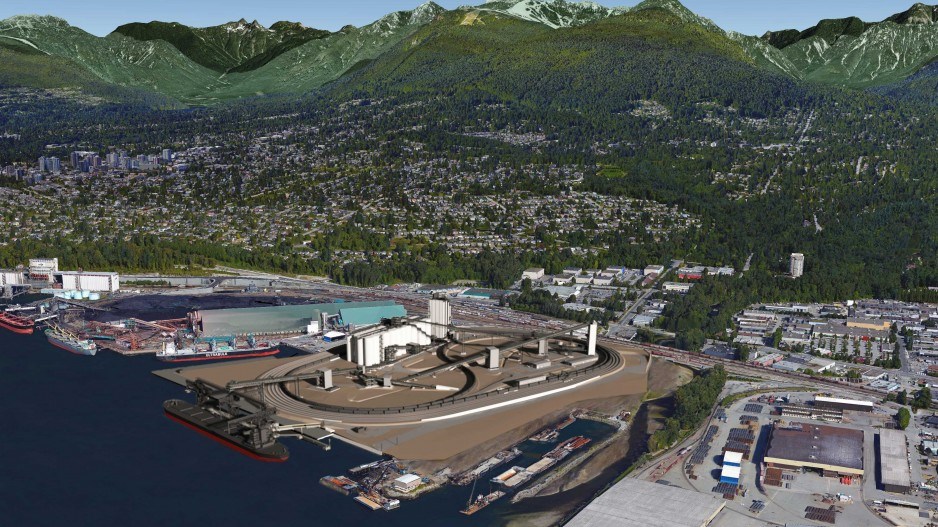A new leading edge grain terminal planned for the North Shore that promises to break the bottleneck in Western Canada’s movement of grain has received a final investment decision.
G3 Global Holdings, a private enterprise owned by Bunge Canada and Saudi agricultural company Salic, won’t say how much the new terminal will cost, but G3 CEO Karl Gerrand said it’s a capital investment that will be in the “hundreds of millions of dollars.”
The new terminal will be built on a 65-acre site leased from the Port of Vancouver on the North Shore, immediately west of the Second Narrows Bridge.
It will speed the shipment of Western Canadian grain using a novel approach to the way grain cars are handled and unloaded.
It will use a looped railway yard that will allow trains to move in and out of the terminal without having to uncouple cars. The terminal will also allow for larger bulk vessels, allowing more grain to move with fewer, but larger, ships.
Gerrand said the terminal will be two-to-three times faster than other grain terminals.
“This is a very significant investment,” Gerrand said. “It’s what we refer to as a next-generation terminal that not only will bring extremely high efficiency, when compared with the existing terminals of Canada today, but will also be built to the highest standard of design with respect to safety, noise and just sheer throughput that can be managed through this facility.”
A typical train will have up to 135 to 150 grain cars, which typically have to pull into a railway yard and be uncoupled from the locomotive for unloading at a grain terminal.
“Our facility is designed to take that entire train, with the locomotive still on it, and take it onto our site, and it curls around the terminal,” Gerrand said. “We can hold three 134-car unit trains on site. The rest of the facilities in Vancouver can only take smaller sections of that train at once.
“We have high capacity ship loaders,” Gerrand added. “We can load vessels at up to 6,500 tonnes per hour, which is a much faster loading speed.”
The terminal will handle a variety of grains from Western Canada: cereal grains, oilseeds and pulse crops.
In 2014, the logistical flaws in Canada’s movement of grain were highlighted when a severe bottleneck occurred, stalling grain ships in English Bay.
The bottleneck was the result of a bumper crop on the prairies in the fall of 2013, a severe winter that held up trains and a trucker’s strike at the Port of Vancouver. Farmers were stuck with operating debts; they couldn’t pay because they couldn’t get their grain to market.
Gerrand said a new terminal is needed because the amount of grain Western Canada is expected to export is growing.
In 2014, 77 million metric tonnes of grain was grown in Western Canada.
“We think by 2025, it will be upwards of 95 million metric tonnes, and the Western Canadian grain production is growing at a compound annual growth rate of about 5% per year, so we need this additional capacity,” Gerrand said.
The new terminal is already permitted by the Port of Vancouver. Gerrand said construction is expected to begin in March 2017, with a completion date of June 2020. Once built, the new terminal will employ 50 people.




